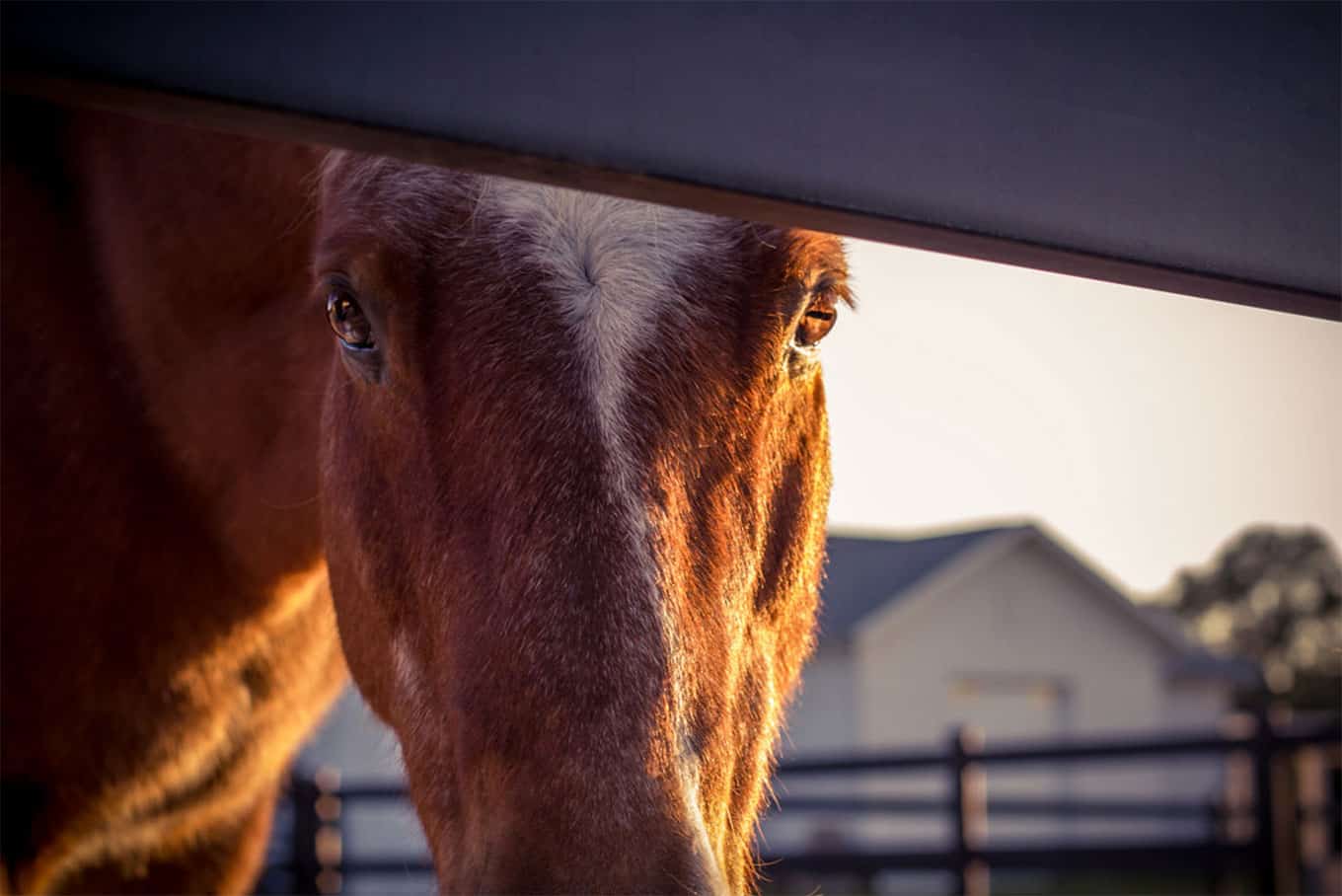It’s a conversation starter, that’s for sure.
Horse people treat barbed wire like it’s the devil’s own invention. Mention it around them and you’ll get lectures about animal welfare and horror stories that’ll turn your stomach. Cattle ranchers, especially the old-timers, act like questioning barbed wire is questioning their entire way of life.
Both sides are partly right and mostly wrong, and the truth sits somewhere in the middle where nobody wants to look.
I’ve been on both sides of this fence—literally and figuratively.
So let’s have the uncomfortable conversation about when barbed wire makes sense, when it’s criminally stupid, and why the answer isn’t as simple as either side wants it to be.
The Truth About Barbed Wire Fences
The horse people are mostly right. Barbed wire and horses mix about as well as gasoline and matches. Horses are flight animals with thin skin, long legs, and a talent for getting themselves into trouble faster than you can prevent it.
Add sharp metal barbs to that equation, and you’re asking for vet bills that’ll make your eyes water.
I’ve seen what barbed wire does to a panicked horse. Hell, I’ve seen what it does to a calm horse that just happened to scratch an itch on the wrong fence post. The damage isn’t pretty, and it’s rarely minor. When horse people tell you barbed wire is dangerous, believe them.
The old-school cattle ranchers have a point too. When you’re running 1,000 head across 50,000 acres in country where the nearest neighbor is 20 miles away, the economics change. Smooth wire costs more, requires different installation techniques, and doesn’t always contain cattle as effectively.
For some operations, barbed wire isn’t just cheaper…it’s the only thing that makes the numbers work.
The real question isn’t whether barbed wire is good or bad. It’s whether it’s appropriate for your specific situation, animals, and risk tolerance.
The History Lesson Nobody Asked for (but Need)
Barbed wire spread across the American West for one simple reason: it worked. Before barbed wire, you couldn’t economically fence large areas of open range. The stuff was cheap, effective at containing cattle, and could be installed by anyone with a posthole digger and a strong back.
Joseph Glidden patented his design in 1874, and within 20 years, millions of miles of the stuff stretched across the frontier. It made large-scale cattle ranching possible in areas where traditional fencing would have been prohibitively expensive.
Here’s what matters: barbed wire was designed to contain half-wild longhorn cattle on open range, not to safely manage horses in paddocks or handle modern livestock breeds in intensive management situations. The tool hasn’t changed much, but how we use it and what we expect from it has changed dramatically.
Most problems with barbed wire come from using it in situations it was never designed for, or installing it in ways that ignore basic safety principles.
Barbed Wire with Horses: Almost Always Wrong
Barbed wire and horses are a bad combination. I don’t care how carefully you install it, how well-trained your horses are, or how many generations of your family have used it without problems. The risk-to-benefit ratio is all wrong.
- The injury statistics are ugly. Horses hitting barbed wire at speed suffer lacerations that require hundreds of stitches and months of recovery. Leg entanglements can cause tendon damage that ends careers or lives. Even minor barbed wire cuts on horses often become infected, heal poorly, and leave permanent scars.
- The behavior mismatch is fundamental. Horses explore with their noses, scratch against fencing, and can panic into full flight mode in seconds. Every one of these behaviors turns barbed wire into a weapon against them.
- “Safe” barbed wire isn’t safe with horses. Smooth wire on top and bottom with barbed wire in the middle, plastic sleeves over the barbs, extra-tight installation to prevent sagging. None of it changes the basic problem—you’re putting sharp metal in an environment with animals that can’t see it coming and can’t think their way out of trouble.
- The few exceptions are still risky. Maybe you’ve got an enormous pasture with cattle-broke horses that never get excited about anything. Maybe the barbed wire is so far from anything interesting that horses never get near it. These situations exist, but they’re rare, and they’re still gambling with expensive animals.
Barbed Wire with Cattle…It’s Complicated
With cattle, the calculation changes. Cattle are different animals with different behaviors, and in some situations, barbed wire still makes sense.
- Where it works: Large-scale range operations with experienced cattle, temporary fencing for rotational grazing, boundary fencing in areas where cattle pressure is light, and situations where the economics of alternatives simply don’t work.
- Why it can work with cattle: Cattle are heavier, thicker-skinned, and generally less panicky than horses. They learn to respect barbed wire and usually avoid it once they understand what it is. Their behavior patterns create less risk of high-speed impacts or entanglement.
- But the economics aren’t simple. Yes, barbed wire costs less upfront. But factor in injury rates, vet bills, lost production from injured animals, and liability issues, and the numbers get more complicated.
- Installation matters more than most people realize. Properly installed barbed wire (tight, visible, with adequate post spacing) creates far fewer problems than the sagging, rusty death traps you see on too many properties. Most barbed wire problems come from poor installation or deferred maintenance.
- Modern alternatives often work better. High-tensile smooth wire systems, when properly installed, contain cattle as effectively as barbed wire while reducing injury risk. Electric wire adds containment power without adding injury risk. The technology has improved while barbed wire has stayed the same.
Better Barbed Wire Fence Alternatives
Steel board fencing is what we build because it solves the fundamental problems that make people consider barbed wire in the first place. Need strong containment? Steel board handles anything you throw at it. Worried about cost? It lasts 30+ years with minimal maintenance, making the lifetime cost competitive with systems you’ll replace multiple times. Want professional appearance? Steel board looks like you give a damn about your operation.
For horse operations, there’s no comparison. Steel board provides the strength and containment of barbed wire without any of the injury risk. The smooth surfaces and engineered flexibility actually protect horses while containing them more effectively than sharp wire ever could.
Even for cattle operations, steel board makes sense in high-traffic areas, around facilities, and anywhere you want professional appearance with zero maintenance headaches.
- High-tensile smooth wire provides similar containment to barbed wire without the injury risk. Yes, it costs more upfront and requires different installation techniques. But the total cost of ownership is often lower when you factor in reduced injuries and maintenance.
- Electric fencing offers containment with minimal injury risk. Solar-powered systems work in remote areas without power infrastructure. Temporary electric systems provide flexibility for rotational grazing without permanent infrastructure costs.
- Combination systems use different fencing types for different applications. Maybe barbed wire for remote boundary fencing where animal contact is minimal, and steel board for areas with regular animal traffic, high-value animals, or anywhere appearance matters.
- Upgrading existing barbed wire can reduce risk without complete replacement. Adding smooth wires above and below existing barbed wire, improving visibility with flagging, and maintaining proper tension all help. Better yet, replace the worst sections with steel board and gradually upgrade the rest as the budget allows.
Should You Invest in Barbed Wire Fencing?
If you’re considering barbed wire for horses: Don’t. Full stop. Find another way or find different animals.
If you’re considering barbed wire for cattle: Look hard at alternatives first. Calculate the real costs including potential injuries, liability, and property value impacts. If alternatives truly aren’t economically feasible, install barbed wire properly and maintain it religiously.
If you inherited property with barbed wire: Assess the risk based on how you’re using the property. High-traffic areas with valuable animals should be upgraded first. Remote boundary fencing might be acceptable temporarily.
If you’re torn between initial cost and long-term value: Remember that cheap fencing often becomes expensive fencing when you factor in the total cost of ownership.
Your animals, your property, your choice. Just make sure you’re making that choice with full knowledge of what you’re risking.
Need help figuring out alternatives that work for your specific situation and budget? Give us a call. We’ll give you straight answers about what makes sense for your operation, whether it’s what we sell or not.



